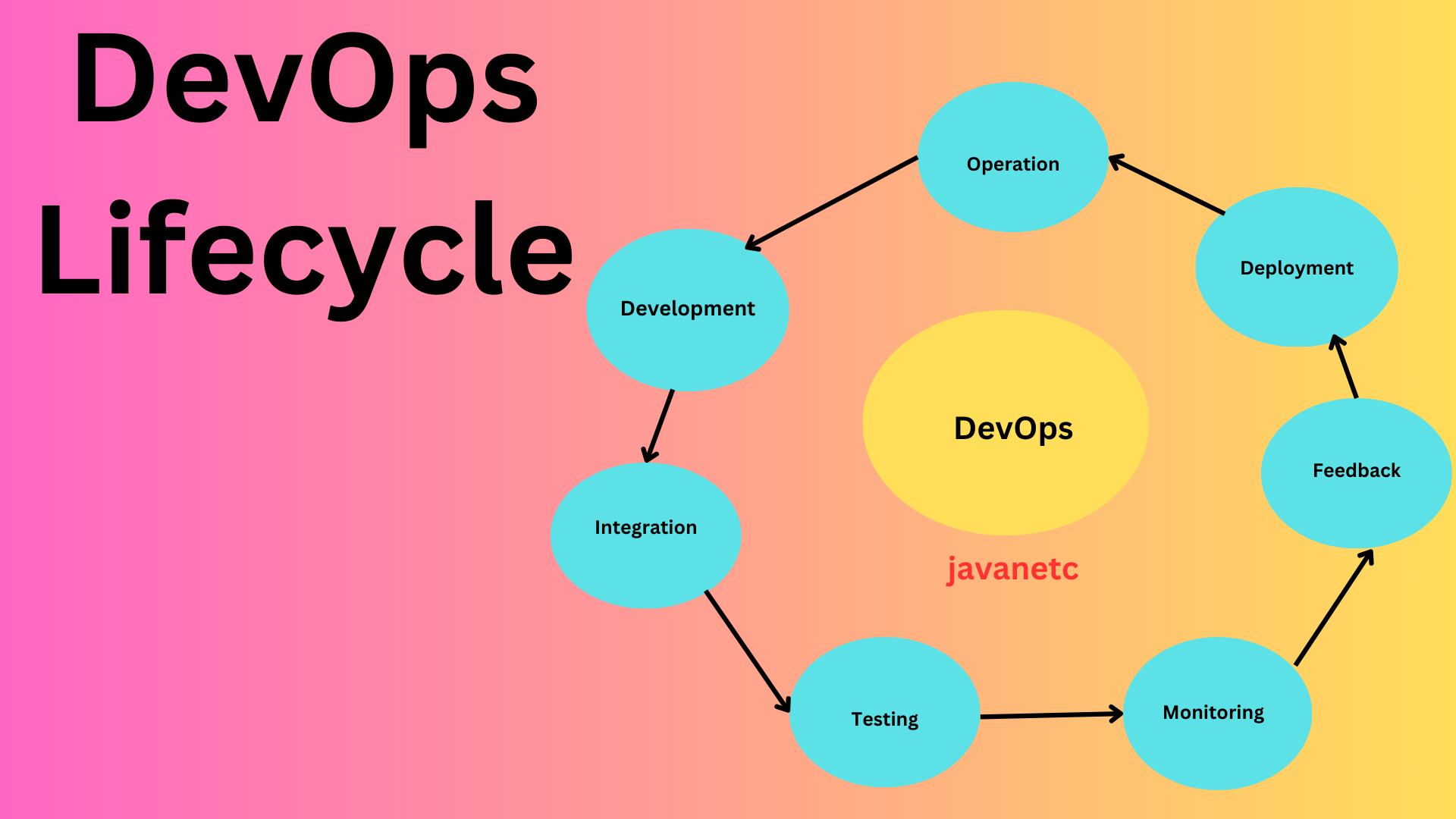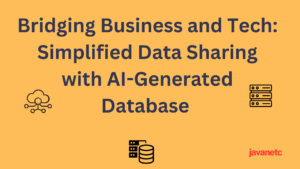Introduction
The DevOps Lifecycle is a software development approach that prioritizes collaboration and communication among development and operations teams. This includes ongoing development, integration, testing, monitoring, feedback, implementation, and operations. Best practices include fostering a collaborative work environment, utilizing automated dashboards, and implementing robust security procedures. The goal is to deliver software releases more quickly, frequently, and reliably.
Table of Contents
What Is DevOps Lifecycle?
The pursuit of swifter and more efficient software development prompted the emergence of the DevOps lifecycle. Traditionally, development, testing, and deployment followed distinct phases, as seen in models like the Waterfall approach, which relied on a sequential process. This often resulted in prolonged development cycles with limited flexibility to adapt to evolving needs or market dynamics.
In response to these challenges, DevOps was conceived, amalgamating development and operations into a unified cycle that collaborates across the entire software development lifecycle.
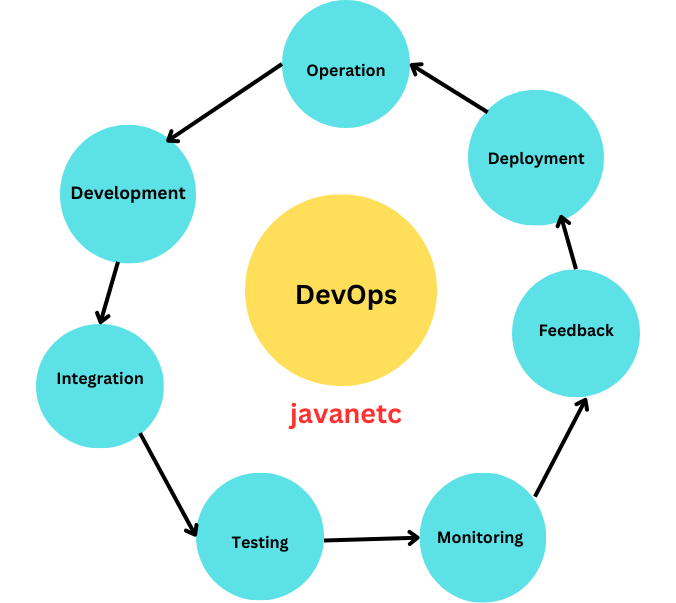
The DevOps lifecycle represents a process framework that seamlessly integrates IT operations and software development methodologies to streamline the software development process. It embodies a more agile, collaborative, and automated approach to software development and deployment, aiming to bolster the reliability, velocity, and quality of software delivery.
DevOps Lifecycle Phases
The primary objective of the DevOps Lifecycle is to reduce the duration of the system’s development cycle and consistently deliver features, fixes, and upgrades in alignment with business objectives. This lifecycle comprises seven phases known as the DevOps Lifecycle Phases.
Each phase of the DevOps lifecycle iterates multiple times until its goals are achieved, establishing a pipeline that facilitates the swift flow of code while maintaining rigorous standards. Let’s explore these DevOps lifecycle phases individually.
Continuous Development
The Continuous Development (CD) phase encompasses the planning and coding stages of software development. Here, developers gain a comprehensive view of the entire development cycle during planning, aiding in a thorough understanding of project requirements. Various version control systems are employed in this phase to manage and preserve the software code.
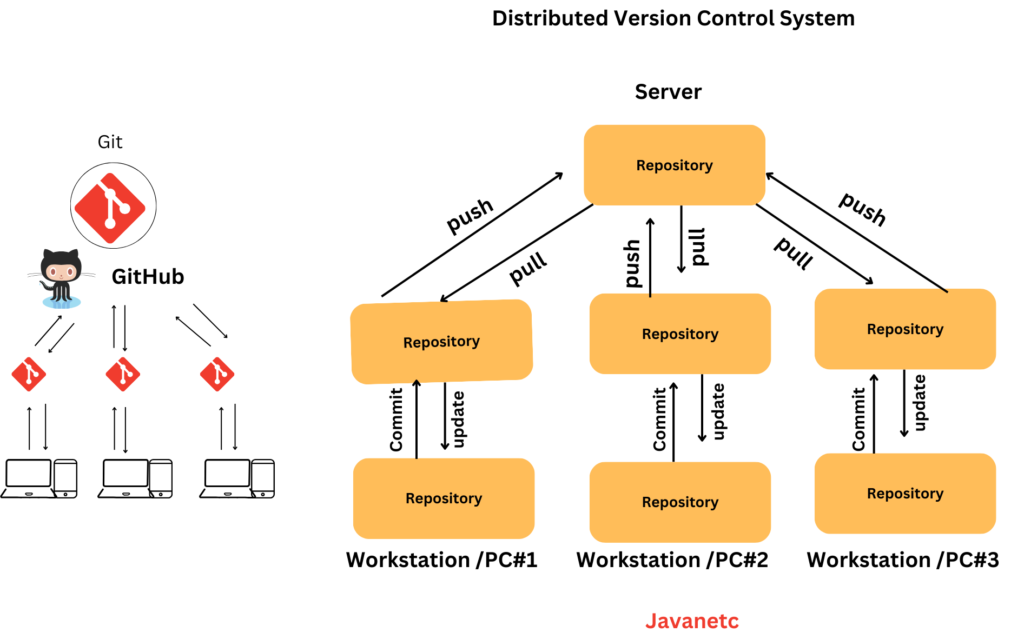
Common tools utilized in this phase include Git, Gradle, Maven, among others. Git serves as a distributed version control system, supporting source code management, team collaboration, and continuous integration and delivery. Gradle and Maven, on the other hand, are build automation tools that streamline the process of dependency management.
Continuous Integration
Following the development phase comes Continuous Integration (CI). With CI, developers regularly push code changes to a shared repository, often using a version control system like Git. These code modifications undergo automatic building and testing in a dedicated environment, distinct from the development environment. This ensures compatibility with the existing codebase and guards against the introduction of new issues or regressions.
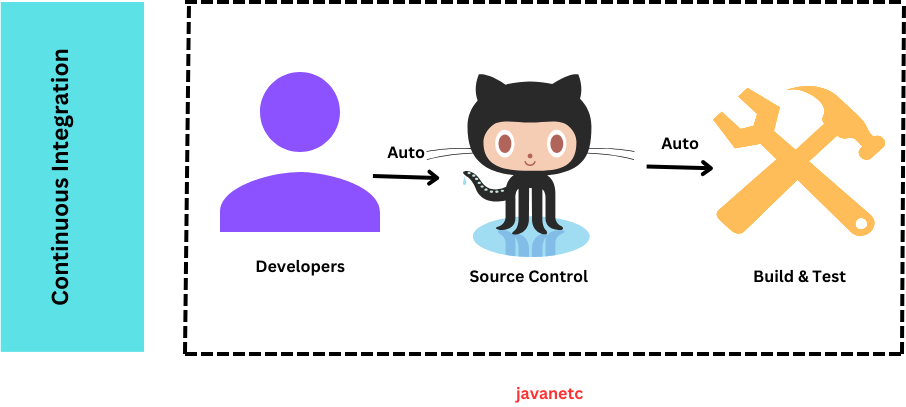
A key tool in this phase is Jenkins. Jenkins fetches updated code from the Git repository whenever changes occur and initiates a build process, resulting in an executable file. Subsequently, this build is deployed to either the test server or the production server

Continuous Testing
The subsequent phase is Continuous Testing, where the developed code undergoes thorough scrutiny for faults and defects. Quality Analysis (QA) plays a pivotal role in assessing the usability of the software produced. Various tools such as TestNG, JUnit, and Selenium are employed for continuous testing, with TestNG generating reports and Selenium managing automation testing.

Automation testing offers significant time and resource savings compared to manual testing, and this process can be facilitated by utilizing a Continuous Integration tool like Jenkins, which automates the continuous testing phase.
Continuous Monitoring
Continuous Monitoring is a vital phase within the DevOps lifecycle, where the efficiency of applications, instruments, or hardware is assessed through ongoing observation. This phase facilitates the identification of potential issues and areas for improvement, empowering DevOps teams to address them proactively before they escalate into significant problems impacting end users.
During continuous monitoring, metrics such as application performance, server utilization, and user activity are gathered and analyzed. These data points offer insights into the system’s health and the performance of the software. Various tools like Nagios, Splunk, Sensu, ELK Stack, and NewRelic are employed for monitoring purposes.
Continuous Feedback
Continuous Feedback represents a pivotal stage within the DevOps lifecycle. Here, feedback from both users and systems is actively collected and analyzed. The DevOps team monitors the software, identifies issues, gathers feedback, and scrutinizes usage data to iteratively improve the software.
This phase empowers DevOps teams to swiftly identify issues and implement necessary changes by leveraging data and user feedback. Feedback mechanisms such as automated testing and automated dashboards play a crucial role in this process. Additionally, tools like Pendo (a product analytics tool) are utilized to gather feedback directly from customers, enabling continuous refinement of the software.
Continuous Deployment

- Continuous Deployment (CD) involves the automatic deployment of software changes to production environments as soon as they become available. In this phase, any code modifications that successfully pass automated testing are promptly and manually released to production within a continuous deployment environment.
- Development teams typically implement a pipeline of automated tests and quality checks to facilitate continuous deployment, ensuring that code changes meet the necessary standards for production release. This pipeline often includes various tests such as unit tests, integration tests, functional tests, security tests, and performance tests, among others.
- Infrastructure as Code (IaC) tools and automation scripts are commonly utilized to automatically deploy code changes to production environments once they have successfully passed all required tests.
- Continuous deployment offers several advantages for software development teams, including accelerated time to market, enhanced reliability, and reduced likelihood of errors and failures.
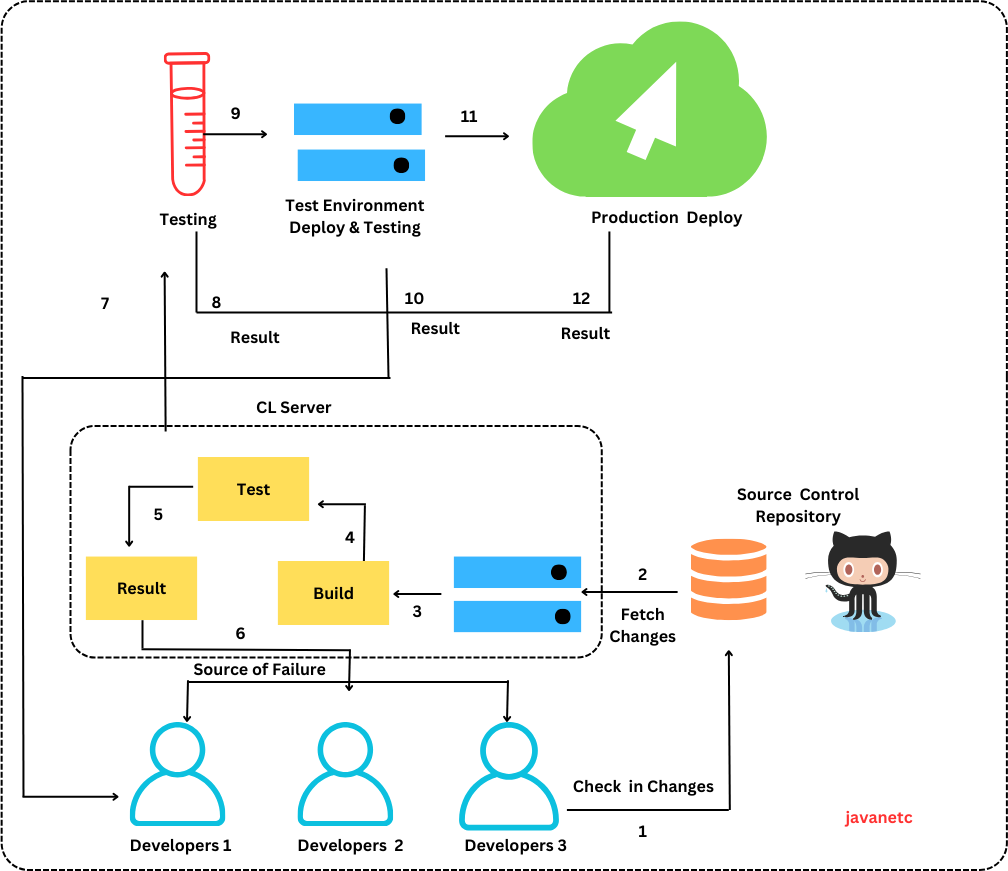
Continuous Operations
Continuous Operations (CO) is focused on maintaining the reliability and effectiveness of software programs in real-world environments. This phase involves ongoing maintenance, monitoring, and optimization of both the software program itself and the supporting infrastructure.
By implementing continuous operations procedures, DevOps teams can ensure that software applications remain consistently reliable, available, and functional. This improves user experience and reduces the risk of downtime or other issues.
Top DevOps Best Practices
Cultivate Collaborative Culture:
DevOps thrives on collaboration and breaking down team silos. Encourage open communication, information sharing, and cross-functional training to foster a culture of collaboration where teams work together towards shared goals.
Practice Patience:
DevOps is an iterative process that requires patience and perseverance. Embrace the understanding that change takes time and setbacks are inevitable. Teams should learn from mistakes, adapt their strategies, and demonstrate patience and resilience in pursuit of continuous improvement.
Establish Performance Metrics:
Define precise and relevant performance metrics to track progress and identify areas for improvement. Metrics such as deployment frequency, lead time for changes, and mean time to recovery (MTTR) help teams pinpoint bottlenecks and inefficiencies, enabling data-driven decision-making to streamline operations.
Utilize the Right DevOps Toolchain:
Selecting the appropriate tools and technologies for your organization’s needs is crucial for automating the software delivery process. DevOps toolchains typically include continuous integration/deployment (CI/CD) technologies, containerization platforms like Docker and Kubernetes, and configuration management tools such as Chef and Puppet.
Focus on Long-Term Goals:
DevOps is a long-term strategy, so it’s essential to consider objectives beyond immediate gains. Align long-term goals with overarching business objectives, emphasizing value delivery to customers and a commitment to continuous improvement.
Implement Automated Dashboards:
Real-time insights provided by automated dashboards enable teams to track progress, detect issues promptly, and make informed decisions. Ensure that every team member has access to automated dashboards containing metrics relevant to organizational goals, such as Infrastructure Monitoring Dashboards and Application Performance Monitoring Dashboards.
Prioritize Security Practices:
Integrate security measures into every phase of the software delivery pipeline, including access controls, vulnerability scanning, and security testing. Prioritizing security practices helps safeguard the organization against potential breaches and enhances client confidence in the software’s reliability and security.
Conclusion
In conclusion, the DevOps Lifecycle represents a software development approach centered on fostering collaboration and communication between development and operations teams. This methodology encompasses continuous development, integration, testing, monitoring, feedback, deployment, and operations, with the overarching goal of delivering software releases that are quicker, more frequent, and more dependable.
The seven phases of the DevOps Lifecycle—Continuous Development, Continuous Integration, Continuous Testing, Continuous Monitoring, Continuous Feedback, Continuous Deployment, and Continuous Operations—guide teams through the iterative process of software development and deployment.
Embracing a collaborative culture, establishing meaningful performance metrics, and prioritizing robust security measures are among the key best practices for successfully implementing the DevOps Lifecycle. By adhering to these practices, organizations can effectively reduce the duration of the development life cycle and consistently deliver features, fixes, and updates that align closely with business objectives.
